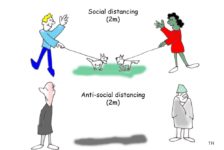Meta, formerly known as Facebook, announced in a blog post this week that it will soon be rolling out a new feature on its Ray-Ban Stories smart glasses that will allow users to make hands-free phone calls using their phone number.
Additionally, the glasses will be equipped with the ability to read incoming text messages out loud, providing an even more convenient way for users to stay connected while on the go.
Launched in 2021, and combining fashion and technology, Ray-Ban Stories are the first wearable product from a partnership between Meta and EssilorLuxottica the company behind the Ray-Ban sunglasses brand.
Ray-Ban Stories look similar to a standard pair of Ray-Ban glasses yet incorporate technologies like cameras, audio, touch controls, and microphones which let you capture video and photos, share your life’s moments, and listen to music or take calls.
In this blog post, we’ll take a closer look at this exciting new development, and explore what it could mean for the future of wearable technology.
How Ray-Ban Stories calling and texting will work
The new hands-free calling and texting feature on Ray-Ban Stories smart glasses will allow users to make phone calls and listen to text messages using their phone number, without having to take their phone out of their pocket.
Although we don’t have the full details, the new functionality is likely to work along similar lines to the way the company integrated WhatsApp calls and messages into the Stories in July 2022.
To make a call, users will simply need to say “Hey Facebook, call [contact name]”, and the glasses will connect the call using the user’s Bluetooth tethered phone.
For incoming text messages, the glasses will provide a readout of the message, but Meta hasn’t said if users can then respond and send messages by saying “Hey Facebook, send a message to [contact name]”, and then dictating the message they want to send. The chances are you should be able to.
The future of wearable technology
Wearable technology has come a long way in recent years, with devices such as smartwatches and fitness trackers becoming increasingly popular. However, the integration of technology into eyewear is a relatively new development, and one that has the potential to revolutionise the way we interact with our devices. With the addition of hands-free calling and texting on Ray-Ban Stories smart glasses, Meta is taking a big step forward in the evolution of wearable technology.
Privacy Concerns
As with any new technology, and particularly with Facebook’s dubious history in this area, there are bound to be concerns about privacy and data security. Meta say they implement strict privacy and security measures to ensure that user data is protected, and that the glasses will only be able to access the user’s phone number and messaging history. Additionally, the glasses are equipped with a physical switch that can be used to turn off the microphone and prevent voice commands from being heard.
Potential of hands-free wearable technology
The addition of hands-free calling and texting on Ray-Ban Stories smart glasses has the potential to transform the way we communicate while on the go. By allowing users to make calls and send messages without having to take their phone out of their pocket, the glasses could make it easier to stay connected while driving, walking, or performing other tasks. The ability to hear a readout of incoming text messages could also be a game-changer for people who need to stay connected but can’t always look at their phone, such as athletes, disabled people, or construction workers.

Smart glasses and accessibility
Smart glasses have a variety of accessibility benefits for disabled people. Here are a few examples of what is available now, and coming in the near future:
1) Vision Impairments: Smart glasses can be equipped with features such as magnification, contrast enhancement, object, text, and face recognition, and text-to-speech technology to help people with vision impairments.
2) Hearing Impairments: Smart glasses can be equipped with bone conduction technology that transmits sound through the bones of the skull, bypassing the outer and middle ear. This allows people with hearing impairments to hear sounds more clearly without the need for a hearing aid. They can also be used to display real-time captions for people who are deaf or hard of hearing.
3) Mobility Impairments: Smart glasses can be used to control various devices through voice commands or head movements, which can be particularly helpful for people with mobility impairments who have difficulty using their hands.
4) Cognitive Impairments: Smart glasses can be equipped with memory aids and prompts to help people with cognitive impairments remember important tasks, appointments, and information.
5) Communication Disabilities: Smart glasses can be used to facilitate communication for people with communication disabilities by displaying symbols, text, or pictures to supplement or replace spoken language.
Overall, smart glasses have the potential to greatly enhance the quality of life for disabled people by increasing accessibility and independence.
Conclusion
The addition of hands-free calling and texting on Ray-Ban Stories smart glasses is an exciting development in the world of wearable technology. With the ability to make phone calls and listen to a readout of incoming text messages, Ray-Ban Stories should offer a convenient and intuitive way to stay connected while on the go.
Inevitably with Meta, there will be concerns about privacy and data security, but since the Stories launched the company has stated repeatedly it has measures to ensure that user data is protected.
Meta see Ray-Ban Stories smart glasses as a stepping stone to true augmented reality glasses people will want to wear regularly for extended periods of time. As wearable technology continues to evolve, it will be fascinating to see what innovations emerge in this rapidly growing field.
As to when users will be able to handle phone calls and text messages with their smart glasses Meta has only said the new functionality is “rolling out soon”.





